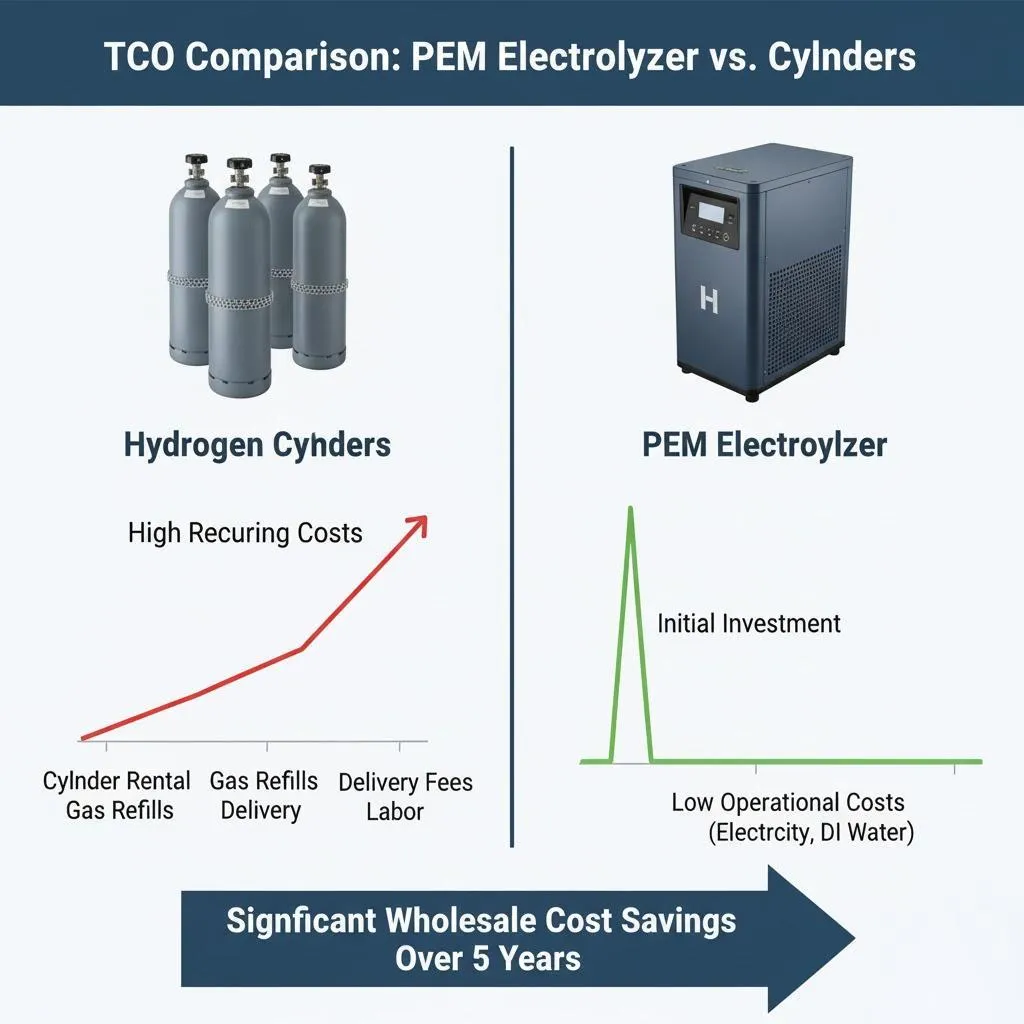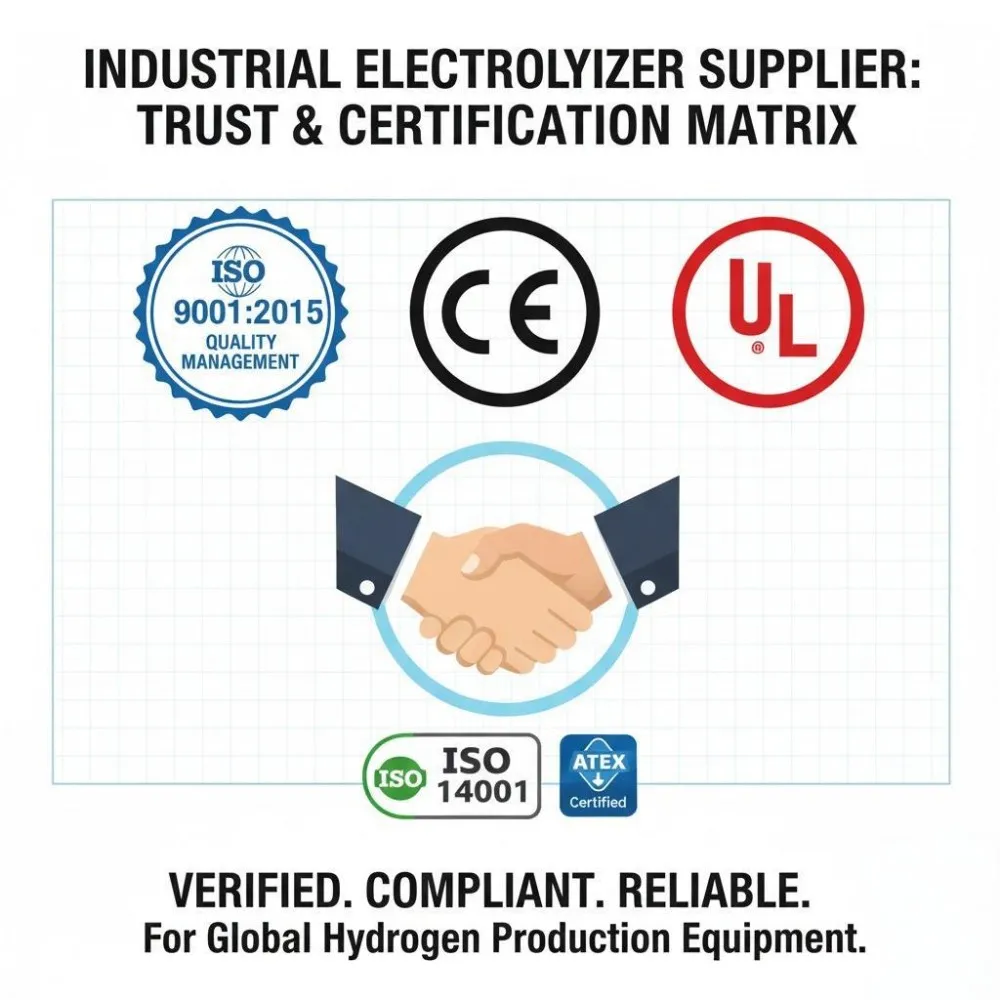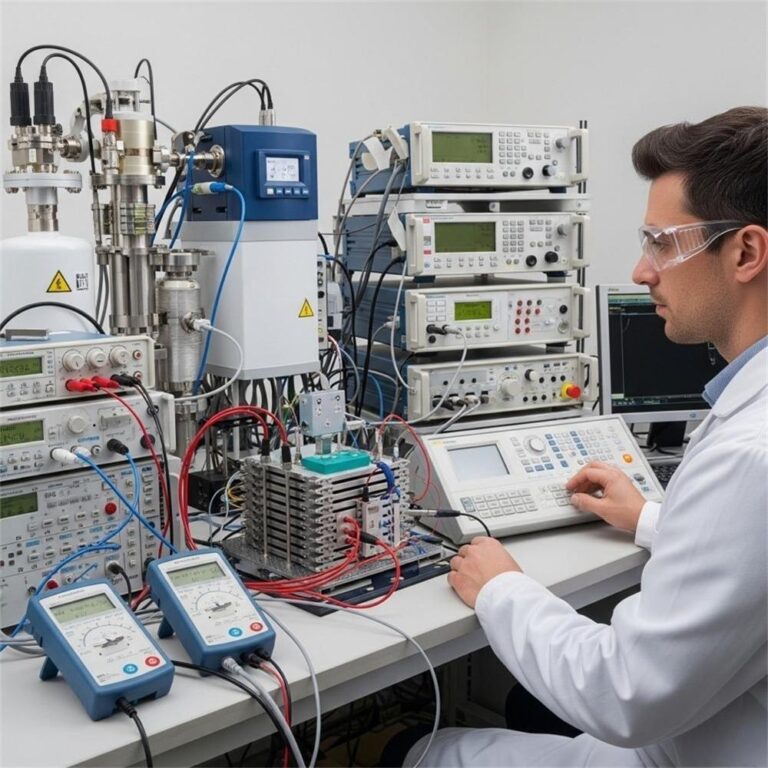Hydrogen fuel cells represent a transformative step toward a cleaner, more sustainable energy future. Central to their performance is the hydrogen generator for fuel cell systems. Selecting the right generator involves more than just matching specs—it requires understanding technology, performance requirements, integration capabilities, and compliance standards. This guide explores everything you need to know to make an informed choice.
Understanding Fuel Cell Power Systems
What Are Fuel Cells?
Fuel cells are devices that convert chemical energy from a fuel—commonly hydrogen—into electricity through a chemical reaction with oxygen.
They are highly efficient, scalable, and emit only water and heat as byproducts, making them ideal for both portable and stationary applications.
Fuel Cell Types and Their Hydrogen Needs
There are several types of fuel cells, but Proton Exchange Membrane (PEM) fuel cells are the most commonly used in transportation and mobile applications. PEM fuel cells require hydrogen of very high purity—typically 99.999% (5N or higher).
This makes the choice of a compatible hydrogen generator crucial.
Role of Hydrogen in Fuel Cells
Why Hydrogen is the Ideal Fuel
Hydrogen is abundant, energy-dense, and produces zero emissions at the point of use. Its light molecular weight and chemical reactivity make it an excellent fuel for fuel cells. However, it must be produced, stored, and delivered in a pure and efficient manner.
PEM vs Other Fuel Cell Types
PEM fuel cells are highly sensitive to contaminants like carbon monoxide or sulfur. In contrast, other types, such as Solid Oxide Fuel Cells (SOFCs), can tolerate lower purity hydrogen or even use other fuels.
This further emphasizes the need for a dedicated hydrogen generator when working with PEM systems.
Hydrogen Purity Requirements
Importance of High-Purity Hydrogen
Fuel cells are precision devices. Impurities in hydrogen can cause severe degradation or complete failure of the stack. Ensuring 5N purity (99.999%) hydrogen from your generator is non-negotiable for most PEM applications.
Contaminants That Damage Fuel Cells
Common contaminants include:
- Oxygen and moisture: Cause side reactions
- Carbon monoxide: Poisons the catalyst
- Sulfur compounds: Permanent degradation
Invest in a generator with robust purification stages to avoid long-term damage.
PEM Technology in Hydrogen Generators
What is Proton Exchange Membrane (PEM)?
PEM technology is used in electrolysis-based hydrogen generators. Water is split into hydrogen and oxygen using a solid polymer membrane as the electrolyte. It’s compact, efficient, and ideal for on-site hydrogen production.
Benefits of PEM Electrolyzers
- Fast startup times
- High hydrogen purity
- Compact footprint
- Low operating temperatures
- Dynamic response to load changes
These make PEM electrolyzers the go-to choice for pairing with PEM fuel cells.
Generator Output Specifications
Flow Rate & Pressure
The generator must supply hydrogen at the rate demanded by your fuel cell—measured in NL/hr (normal liters per hour). Pressure capability (often 5–30 bar or more) must also match storage or system needs.
Adjustability and Modularity
Systems with modular capacity and adjustable flow settings allow for scalability and fine-tuning, ensuring efficient operation even under variable load conditions.
Power Consumption and Efficiency
Energy Input vs Hydrogen Output
The efficiency of a hydrogen generator is the ratio of the energy content of produced hydrogen to the electricity consumed. PEM generators typically achieve 55–70% efficiency.
Minimizing Operational Costs
Choose systems that:
- Use renewable electricity
- Have built-in energy recovery
- Offer predictive diagnostics to reduce downtime
Integration with Fuel Cell Systems
Key Components and Connectors
A hydrogen generator should offer:
- Standardized gas outlet fittings
- Data communication interfaces (Modbus, CAN bus)
- Pressure and temperature monitoring sensors
Real-Time Monitoring Integration
Modern systems support remote diagnostics and integration with supervisory control and data acquisition (SCADA) platforms, ensuring real-time performance tracking and system health management.
Safety Features to Consider
Overpressure Protection
Essential safety valves and sensors must be in place to avoid pressure buildup in the hydrogen line. Systems should shut down automatically in case of anomalies.
Leak Detection Systems
In-built hydrogen sensors and automatic shut-off valves prevent hazardous leaks. Ensure the system is certified for high-safety environments.
Maintenance and Reliability Factors
Scheduled Servicing Needs
Some systems require minimal maintenance, while others demand periodic replacement of PEM membranes or deionizer cartridges. Check service intervals before purchase.
Mean Time Between Failures (MTBF)
Look for MTBF ratings over 10,000 hours, indicating a reliable long-term investment.
Portability and Space Requirements
Compact Hydrogen Generator Designs
Many fuel cell users—especially in mobile or remote setups—require compact solutions. Choose a unit with a small footprint that doesn’t compromise on output.
Mobile vs Stationary Solutions
Mobile units are battery-powered and self-contained. Stationary units are typically used in industrial or commercial setups where space and power aren’t constrained.
Regulatory Compliance & Certifications
ISO, CSA, UL Standards
Compliance with international standards ensures safety, interoperability, and eligibility for certain projects or government incentives.
Hydrogen Generator Licensing
In some regions, installing a hydrogen generator may require local permits. Check zoning, fire codes, and environmental regulations.
Cost Analysis and ROI
Upfront vs Operational Costs
While capital investment is significant, PEM generators offer lower long-term costs due to:
- No need for hydrogen delivery
- Reduced downtime
- Less storage overhead
Payback Period for Fuel Cell Systems
Typically 3–5 years, depending on hydrogen demand and electricity source. Using renewable electricity can shorten ROI.
Case Studies of Real-World Deployments
Industrial PEM Applications
An electronics manufacturer in Germany deployed a PEM hydrogen generator to power its backup fuel cell systems, reducing CO₂ emissions by 80%.
Mobile Fuel Cell Use Cases
A Canadian drone company integrated a lightweight hydrogen generator into a mobile ground station, enabling in-field hydrogen production and boosting drone range by 50%.
Choosing the Right Manufacturer
Vendor Reputation
Look for brands with proven field performance, solid warranty policies, and transparent tech specs.
Technical Support and Warranty
Opt for vendors offering remote support, installation training, and at least 2-year warranties.
Frequently Asked Questions (FAQs)
1. What is the ideal hydrogen purity for a PEM fuel cell?
At least 99.999% (5N) is recommended to avoid performance degradation.
2. Can I use a hydrogen generator indoors?
Yes, with proper ventilation and safety systems in place.
3. How long does a PEM hydrogen generator last?
Most systems have a life expectancy of 10–15 years with regular maintenance.
4. What size generator do I need for a 1 kW fuel cell?
A hydrogen output of 13–15 NL/hr is typically required, depending on the efficiency.
5. Can hydrogen generators run on solar power?
Yes, many PEM systems can be powered by solar in off-grid setups.
6. Do I need a compressor with my generator?
Only if your storage or application requires pressurized hydrogen beyond the generator’s capability.
Conclusion
Selecting the perfect hydrogen generator for fuel cell applications is not a one-size-fits-all task. By considering purity, output specs, safety, efficiency, and integration, you can align your generator choice with your fuel cell needs—ensuring long-term reliability and sustainable energy production.







